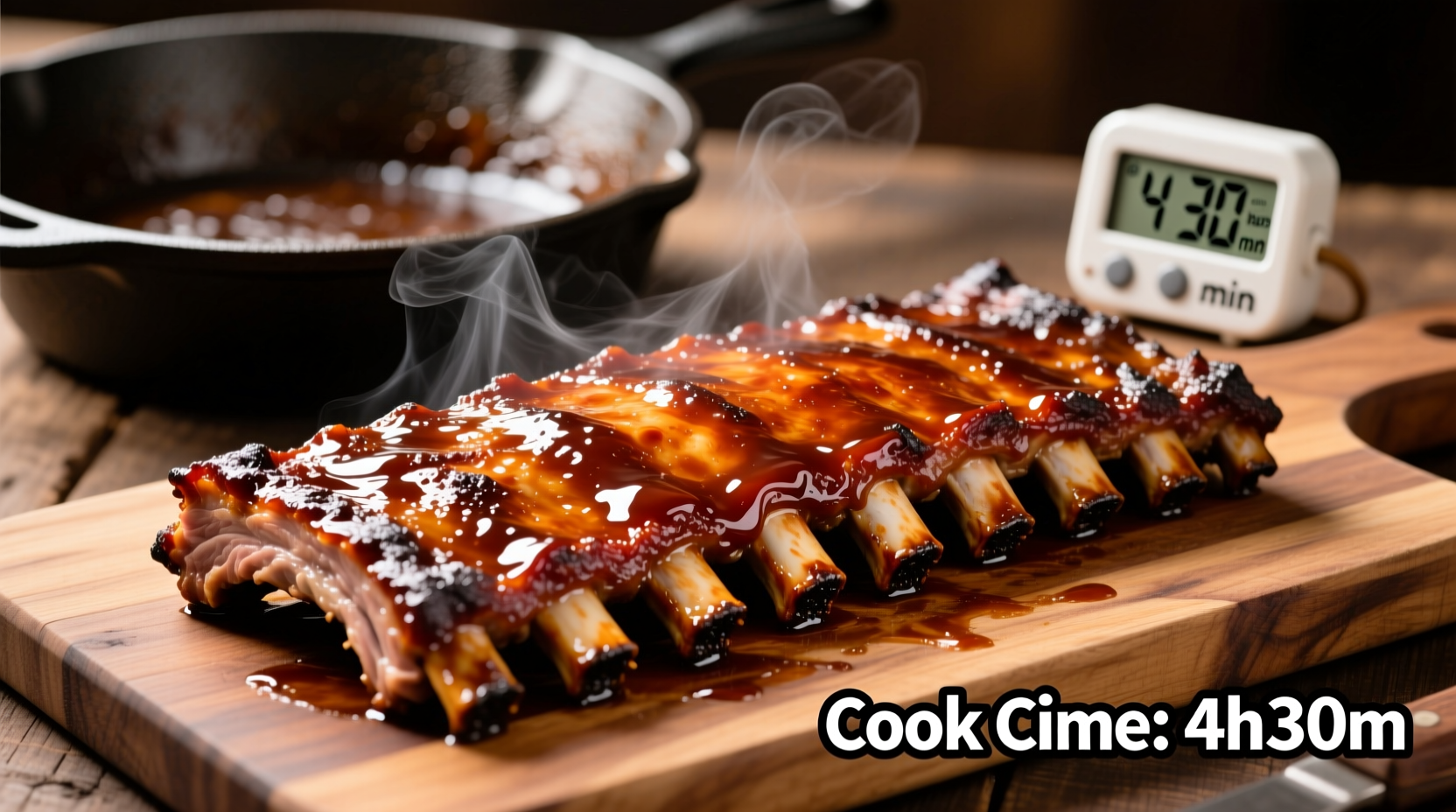Knowing exactly how long does it take to cook ribs can mean the difference between succulent, fall-off-the-bone perfection and tough, undercooked disappointment. As a professional chef who's cooked thousands of racks, I've seen how understanding the variables affecting cooking time transforms ordinary home cooks into rib masters.
Understanding Rib Types and Their Cooking Time Differences
The first factor determining how long to cook ribs is the cut you're working with. Not all ribs are created equal when it comes to cooking duration:
- Baby back ribs (also called loin ribs) are smaller and leaner, typically requiring 3-4 hours at 225°F
- Spare ribs come from the belly area, contain more fat and connective tissue, needing 4-5 hours at the same temperature
- St. Louis style ribs (trimmed spare ribs) cook slightly faster than standard spare ribs due to their uniform shape
- Beef ribs (particularly plate ribs) are substantially larger and can require 5-6 hours at low temperatures
According to the USDA Food Safety and Inspection Service, pork ribs should reach a minimum internal temperature of 145°F with a 3-minute rest time for safety, though most pitmasters cook to 190-205°F for optimal tenderness. Their guidelines emphasize that visual cues often matter more than exact timing when determining doneness.

Cooking Method Comparison: Time Requirements by Technique
The cooking method dramatically affects how long does it take to cook ribs. Here's a detailed comparison of popular techniques:
| Cooking Method | Temperature | Baby Back Time | Spare Ribs Time | Key Characteristics |
|---|---|---|---|---|
| Smoker | 225°F | 3-4 hours | 4-5 hours | Best smoke penetration, most traditional flavor |
| Oven | 275°F | 2.5-3 hours | 3-4 hours | Consistent temperature, no smoke flavor |
| Grill (indirect) | 225-250°F | 3-4 hours | 4-5 hours | Good smoke flavor, requires attention to maintain temp |
| Instant Pot | High pressure | 25-30 min | 30-40 min | Fastest method, lacks bark/smoke flavor |
Temperature's Critical Role in Cooking Time
Understanding the relationship between temperature and cooking time is essential for mastering how long to cook ribs. The low-and-slow method (225-250°F) allows collagen to slowly convert to gelatin without drying out the meat. Higher temperatures (300°F+) significantly reduce cooking time but risk tougher results.
Food science research from the University of Illinois demonstrates that connective tissue in ribs begins breaking down at 160°F but requires sustained heat between 190-205°F for optimal tenderness. This explains why timing alone isn't sufficient - you must monitor both time and internal temperature. Their studies show that ribs cooked to 203°F consistently achieve better texture than those removed based solely on time.
Visual Doneness Indicators Beyond the Clock
While knowing how long does it take to cook ribs provides a framework, professional pitmasters rely on visual cues to determine perfect doneness:
- The bend test: When lifted with tongs, properly cooked ribs should bend and develop surface cracks
- Meat shrinkage: The meat should have pulled back from the bones by about 1/2 inch
- Bone exposure: Bones should begin to protrude slightly from the ends
- Texture test: Meat should feel tender but not falling off the bone when pressed
Many home cooks make the mistake of relying solely on timing without checking these indicators. Ribs cooked in a smoker with fluctuating temperatures might need an extra 30-60 minutes beyond standard timing guidelines. This context boundary is crucial - your specific equipment and environmental conditions will affect how long to cook ribs in your kitchen.
Common Timing Mistakes That Ruin Ribs
Based on years of teaching cooking classes, these timing errors cause the most rib disasters:
- Opening the smoker/oven too frequently - each peek can add 15-20 minutes to total cooking time
- Not accounting for the stall - when internal temperature plateaus around 150-170°F for 1-2 hours
- Skipping the resting period - ribs need 15-30 minutes rest after cooking for juices to redistribute
- Using inconsistent heat sources - hot spots in grills/ovens cause uneven cooking
Professional competition barbecue teams often wrap ribs in butcher paper or foil during the stall phase (known as the Texas crutch) to push through this temperature plateau more quickly. This technique can reduce how long does it take to cook ribs by 30-60 minutes while maintaining moisture.
Adjusting Cooking Time for Dietary Preferences
Your preferred rib texture significantly impacts how long to cook ribs:
- Fall-off-the-bone (popular but controversial): Cook to 203-205°F (4.5-6 hours)
- Restaurant style (meat separates easily but doesn't fall off): 195-200°F (4-5 hours)
- Firm but tender (preferred by barbecue purists): 190-195°F (3.5-4.5 hours)
For those following specific diets like keto, understanding how long does it take to cook ribs without sugary sauces becomes important. Many pitmasters apply sugar-based glazes only during the final 30 minutes to prevent burning while still achieving caramelization.
Perfect Rib Timing: Putting It All Together
Now that you understand the variables affecting how long does it take to cook ribs, here's a practical timeline for success:
- Prep (30 min): Remove membrane, apply rub, let sit at room temperature
- Initial cook (2-3 hours): Cook at 225°F until internal temperature reaches 150°F
- Stall phase (1-2 hours): Temperature plateaus - consider wrapping if desired
- Final cook (1-2 hours): Continue until internal temperature reaches 190-205°F
- Rest (30 min): Tent with foil - crucial for juicy results
Remember that these how long to cook ribs guidelines serve as starting points. Your specific equipment, ambient temperature, and rib thickness will require minor adjustments. The most reliable method combines timing with temperature monitoring and visual doneness tests.











 浙公网安备
33010002000092号
浙公网安备
33010002000092号 浙B2-20120091-4
浙B2-20120091-4